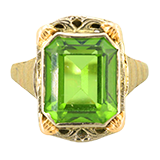Monumental Qianlong Period Baizitu Hundred Boys Embroidered Tapestry
Item Details
A Qianlong period (1711-1799) Imperial quality baizitu (百子圖) Hundred Boys embroidered tapestry. This monumental work is finely embroidered with the classic Chinese theme “Hundred Boys” with one hundred and three richly-dressed boys in a traditional garden landscape. The theme typifies not only the desire for many sons to continue one’s lineage, but specifically for noble and distinguished sons (貴子 guizi) who will excel at their civil service examination. The theme itself originates from a story of King Wen of Zhou (周文王, 1152-1056 BCE) who, according to legend, was blessed with ninety-nine sons, but adopted another boy to have one hundred. (Bartholomew, p. 65)
While the theme of Hundred Boys is often suggested on works, this wonderfully detailed tapestry is actually complete, with over 100 figures rendered. The tapestry is laden with symbolism appropriate for a wedding or nuptial chambers. One of the highlights of the work is a young boy riding a qilin, a mythical chimeric beast with scales, dragon-like features, and hooves (see image 26, positioned to the lower right of the central pavilion). This recalls the Chinese auspicious phrase “may the qilin bring you a son” (麒麟送子 qilin songzi), as qilin, much like a stork in Western culture, are believed to bring children to expectant parents. The front rider, wearing a crown and red robes while holding a sheng mouth organ (笙), is dressed as a “first scholar” (zhuangyuan 狀元), the student who achieved the highest score on the imperial examinations. (Bartholomew, p. 65). This further emphasizes the wish for not only sons, but successful ones.
Near the top of the work, between the twin hanging frontlets, are three boys crossing a bridge (see images 4, 7, and 13). One holds a box of lingzhi fungus representing immortality and the power to grant wishes, the second holds a bowl of lotus seeds (蓮房 lianfang, 蓮蓬 lianpeng) symbolizing fertility, and the third holds a lotus blossom. This is a rebus meaning “may you continuously give birth to distinguished sons (連生貴子 liansheng guizi), as “lotus” (蓮 lian) are a pun for “continuous” (連 lian) and the musical instrument sheng (笙) is a pun for giving birth (生 sheng). Additionally, lotus blossoms imply a wish for harmony among sons and grandsons (子孫和合 zisun hehe). These visual puns are repeated throughout with several boys holding lotus, sheng, lotus pods, ruyi scepters, and lingzhi fungus as they frolic among dynamic stones, blooming flowers, and elegant pavilions and bridges. (Bartholomew, p. 47, 64) They are also surrounded by flowering Osmanthus fragrans, known as guihua (桂花) in China, which given the phonetic similarity, is a symbol for distinguished sons (貴子 guizi). (Bartholomew, p. 63).
The ground, now extremely faded across most of the work, was originally a rich vermilion red, which is visible in some areas, namely underneath the top curtain, the lower hem, and peeking through where some of the embroidery has worn away (see images 4-6, 9, 11, 40-1). A color of celebration, this paired with the connotations of the theme, makes it very likely that this exceptional work was created to commemorate a wedding or to decorate a nuptial chamber. (Wilson 56, 63-4; Yang et al 248; Brown et al cat. 25)
Chinese textiles of this size are typically rendered in the woven silk kesi (or k’o-ssu 緙絲) technique and it is exceedingly rare to find an embroidery on this scale. A few similar works include a wedding curtain gifted to the Qianlong Emperor, now at the Liaoning Provincial Museum (Yang et al, p. 248, plate 132; discussed at length below), bed curtains that were displayed in the imperial nuptial bed chamber in the Palace of Earthly Tranquility or Kunning Palace (Beijing 2006, p. 83, plate 65, also discussed further below), and a 19th century work in the Amy S. Clague Collection (Brown cat. Entry 25, plate 140). The work is predominantly worked in satin-stitch and embellished with gold and silver-wrapped silk threads. The work is unusually fine, with extreme delicacy and closeness, implying noble or Imperial quality.
The tapestry offered here is extraoridnarily similar to bed curtains from the nuptial chambers of the Palace of Earthly Tranquility, also known as the Kunning Palace (坤寧宮). The chamber was used by the Emperors Kangxi, Tongzhi, Guangxu and Xuantong of the Qing dynasty prior to the Revolution of 1911. The bed curtains share the same “Hundred Boys” theme with a comparable composition and embroidery style. The Palace bed curtains also have a horizontal upper curtains and hanging frontlets, however, it has two panels, rather than a single panel. (Zhuoyun Yu, p. 83, plate 65)
Additionally, this tapestry has noteworthy similarities to an embroidered gauze curtain that was presented by the Suzhou Weaving Mill to the Qianlong Emperor to be used during his wedding ceremony, now held in the Liaoning Provincial Museum. (Yang et al, p. 248, plate 132) The Liaoning work is decorated with dragons and phoenixes paired with “double happiness” characters; appropriate themes for nuptial celebrations. The form of the two tapestries are nearly identical, both having a horizontal upper curtain and twin hanging frontlets. The tapestry on offer here is nearly identical in length and approximately 16 inches wider than the Liaoning work (see measurements below, Liaoning work measures 185.6 cm x 98.8 cm or 73.1” x 38.9”). The embroidery is remarkably similar as well, with similar overall designs and with the fineness and styles of stitches used, again, suggesting the Imperial quality of the tapestry.
Provenance: Capt. Frederick Lincoln Chapin (1863–1913) and Grace Card Selden Chapin (1864–1941); thence by descent through the family.
It is likely that Captain Chapin acquired the piece while in U.S. Naval service. Given his long career and proximity to Asiatic stations, we can speculate on multiple periods where acquisition could have occurred.
Following a commission to ensign (c. 1885–86), Frederick L. Chapin was assigned to the sloop-of-war USS Juniata. In 1882 the Juniata embarked for a diplomatic cruise around the world, returning to New York on Dec. 10, 1885. Upon return, twenty officers were implicated (in letter to Treasury Dept.) as having concealed a large quantity of dutiable Chinese and Japanese curiosities aboard the ship. Commander P.F. Harrington vehemently denied any allegation of smuggling, stating that customs officials were allowed to fully inspect the goods. Harrington asserted that his men paid out gross duty fees totaling to roughly $1,400. A published account in Army and Navy Journal notes that the charges of smuggling were wholly disproved. It remains unclear if Chapin had connection to these events or parties involved.
Later in his career (c. 1900–1904), Chapin had served as a staff lieutenant aboard USS Kentucky (BB-6). During the Boxer Rebellion, the Kentucky received orders to sail for Asiatic Station. She arrived in Manila, Philippines on February 3rd, 1901. Between 1901 and 1904, the Kentucky would visit several ports in East Asia, mainly those in China and Japan.
Chapin’s final appointment was as Commander of USS Wyoming (BB-32), flagship of Rear Adm. Charles J. Badger. On October 25, 1913 the Wyoming embarked for a cruise of the Mediterranean, making stops in Malta, Italy, and France. She returned to New York for repairs mid December of that year. Shortly thereafter, Chapin died of disease at the Brooklyn Naval Hospital. Captain Chapin’s celebrated U.S. Navy career spans a total of thirty four years.
References:
Bartholomew, Terese Tse. Hidden Meanings in Chinese Art. San Francisco: Asian Art Museum of San Francisco, 2006.
Brown, Claudia, Robert D. Mowry, Phoenix Art Museum et al. Weaving China’s Past: The Amy S. Clague Collection of Chinese Textiles. Phoenix: Phoenix Art Museum, c. 2000.
Wilson, Verity. Chinese Textiles: Victoria and Albert Museum. London: V&A Publications, 2005.
Yang, Renkai, Liaoning Sheng Bowuguan. Liaoning Sheng bo wu guan Ke si, Ci xiu jing hua. Tokyo: Gakushu Kenkyusha, 1983.
Zhuoyun Yu. Zi jin cheng gong dian 紫禁城宮殿. Beijing: Sheng huo, du shu, xin zhi san lian shu dian, 2006.
Condition
- to poor; The base fabric is extremely brittle and sun-damaged, and has cracked/torn throughout. Original color has faded dramatically (original red color visible underneath the top curtain, the lower hem, and peeking through where some of the embroidery has worn away (see images 4-6, 9, 11, 40-1). Some areas of embroidery are worn and numerous threadbare areas. It has been reinforced at a later date with red fabric (likely matching or coordinating the original base fabric color) and mounted on a bar. Upper right section is not well attached and does not hang on bar. The entire work is exceptionally fragile and delicate.
Due the the nature of this item, EBTH cannot arrange shipping. The winning bidder will be contacted to arrange mutually agreeable pickup with the bidder or the bidder’s carrier.
Dimensions
Item #
18SWF016-100

































































